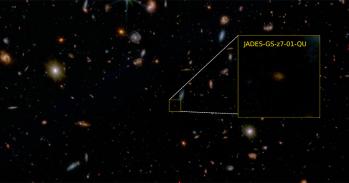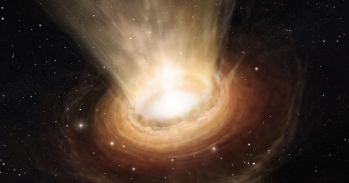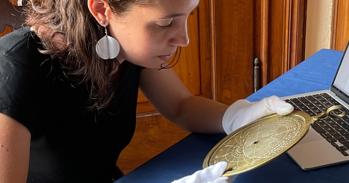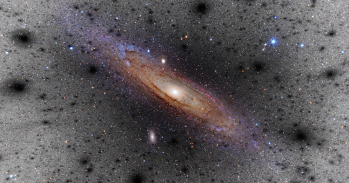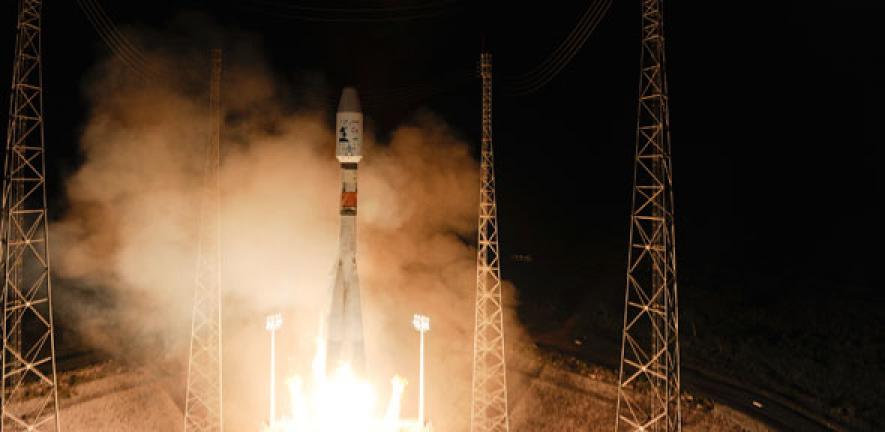
A Cambridge-led outreach project is connecting over 2,200 pupils with the excitement of ESA’s Gaia mission through a Q&A session that will take place tomorrow with the discussion streamed live to schools throughout Europe.
A Cambridge-led outreach project is connecting over 2,200 pupils with the excitement of ESA’s Gaia mission through a Q&A session that will take place tomorrow with the discussion streamed live to schools throughout Europe.
We want the pupils to see for themselves how European centres are working together on this space project that will revolutionise our knowledge of the Milky Way and the Universe more generally.
Nicholas Walton
Will Gaia discover habitable planets similar to the Earth? Is the Universe infinite? Could Gaia be hit by a piece of space debris as in the film Gravity? How many planets are there in the Milky Way?
Children often ask the best questions. These ones come from pupils at schools in Italy, France, Poland and the UK. Their requests for information about space and our Universe are just some of the dozens of questions that will be answered tomorrow by top space scientists as part of a live event. The online Q&A session will link a total of more than 70 institutions across Europe in an ambitious initiative designed to engage school pupils in the excitement of astronomy in general and the science of the Gaia programme, in particular.
Tomorrow’s event is the culmination of an educational outreach project, called Gaia Live in School, which connects more than 2,000 children at 34 schools with leading European space research institutions. The project has been conceived and coordinated by Dr Nicholas Walton, a research fellow at Cambridge University’s Institute of Astronomy, coordinator of the Gaia Research for European Astronomy Training network, and the UK member of the European Space Agency (ESA) Gaia Science Team.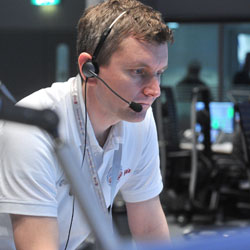
The queries and responses will be filmed by a professional crew at ESA’s European Space Operations Centre (ESOC) in Darmstadt, Germany, and streamed live to the schools involved via a dedicated livestream channel. Responding to the children’s questions will be the Gaia project scientist, Dr Timo Prusti, and the Gaia spacecraft manager, David Milligan. Both are key members of the team at ESA, responsible for Gaia as it embarks on its five-year mission to map a billion stars in our Milky Way.
“Gaia is set to provide the most complete 3-D map of our Galaxy, and allow astronomers to, for instance, directly measure Dark Matter in our galaxy, unravel the formation history of the Milky Way, search for new extra-solar planets, and much more,” said Walton.
“We hope tomorrow will be a fun day for everyone and show children how their everyday mathematics and science can be applied to cutting edge space missions.
The schools taking part in the event are spread right across Europe – from the Canary Islands, Spain in the south to Finland in the north. Each school is linked to a research institute in its area and each one will benefit from two post graduate students from that institute, who will be present in the classroom to work with teachers and act as ‘explainers’. The event has been designed to appeal to children aged around 12, an age when children are mature enough to grasp quite tricky concepts and also extremely open to new ideas.
The ‘explainers’ have all benefited from a training course at ESA’s space technology centre (ESTEC) where they learned how to present advanced scientific content to school-aged children in an accessible way. Teachers from the participating schools have met with the ‘explainers’, to gain information about the background, capabilities and mission of Gaia, enabling them to explain to their pupils what the programme is setting out to achieve and how the international team behind it has been created.
Two Cambridgeshire secondary schools – Parkside Community College and Cottenham Village College – are taking part in Gaia Live in School. Cambridge University PhD student, Iulia Simion, will spend the day with year-7 pupils at Parkside. She said: “We will explore our ‘neighbourhood’ by looking at the general properties of the Solar System and the Milky Way and we will talk about the Gaia mission - introducing the concept of parallax, fundamental for understanding how Gaia estimates distances - using hands-on demonstrations, videos and the live connection to ESOC.”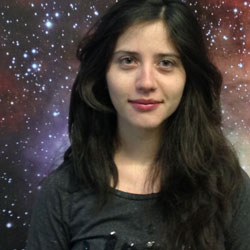
Simion, who is doing her PhD on the structure of the Milky Way, says that her interest in astronomy started when she was very young. She explained: “As a child growing up in Romania and Italy I had many books with ‘pretty’ pictures of planets, galaxies, supernovae and comets. I did not particularly like physics at that time, but understanding the scientific mechanisms behind those beautiful images proved, as I got older, to be very rewarding and has led me to become an astronomer."
Walton’s research looks at the structure of the Universe at the largest scales through the study of Supernova, and nearer by in the Milky Way utilising large area imaging surveys to map the galactic plane. For him, the momentum to learn more about the cosmos also came at an early age. He remembers the excitement when the first probes landed on Mars, and beamed those pictures of the red planet back to Earth, and seeing these images at an after-school physics club at secondary school.
The ‘Gaia Live’ Q&As will be accompanied by film clips and the latest astronomical images of the Milky Way and our Solar System to enliven and illustrate the points discussed about the Gaia mission. The session will be followed by demonstrations of how to get involved in the science of space exploration in a hands-on way, such as how to build your own telescope, how Gaia measures the distances to stars just by taking pictures of the sky (using parallax), and how to create your own model of Gaia.
“We hope that the Gaia Live event will inspire a large number of the next generation of scientists, some of whom might well lead the next wave of astronomical and space discovery in future years,” said Walton.
Inset images: David Milligan, Gaia Spacecraft Operations Manager (ESA/J Mai); Iulia Simion.
This work is licensed under a Creative Commons Licence. If you use this content on your site please link back to this page.


